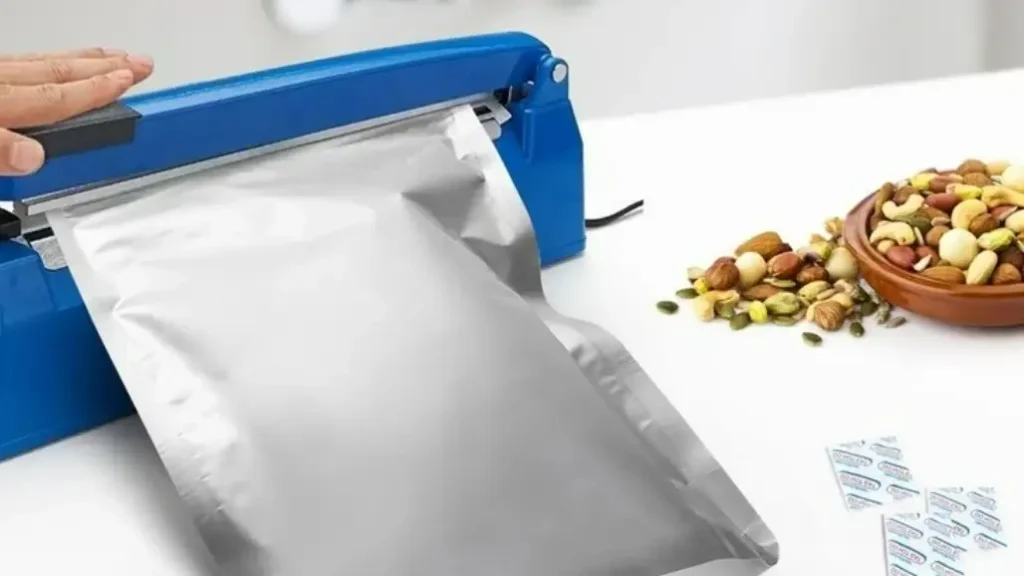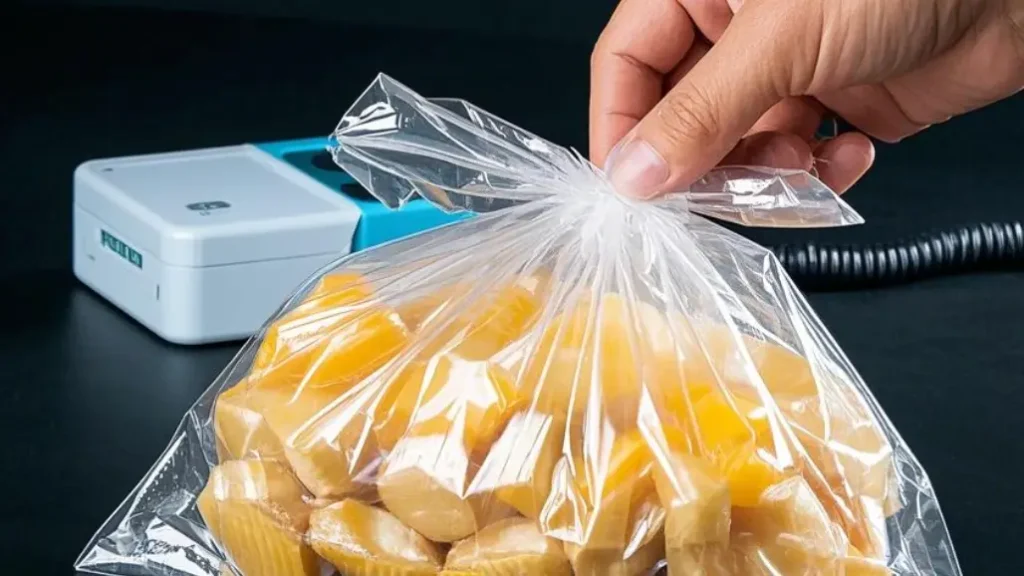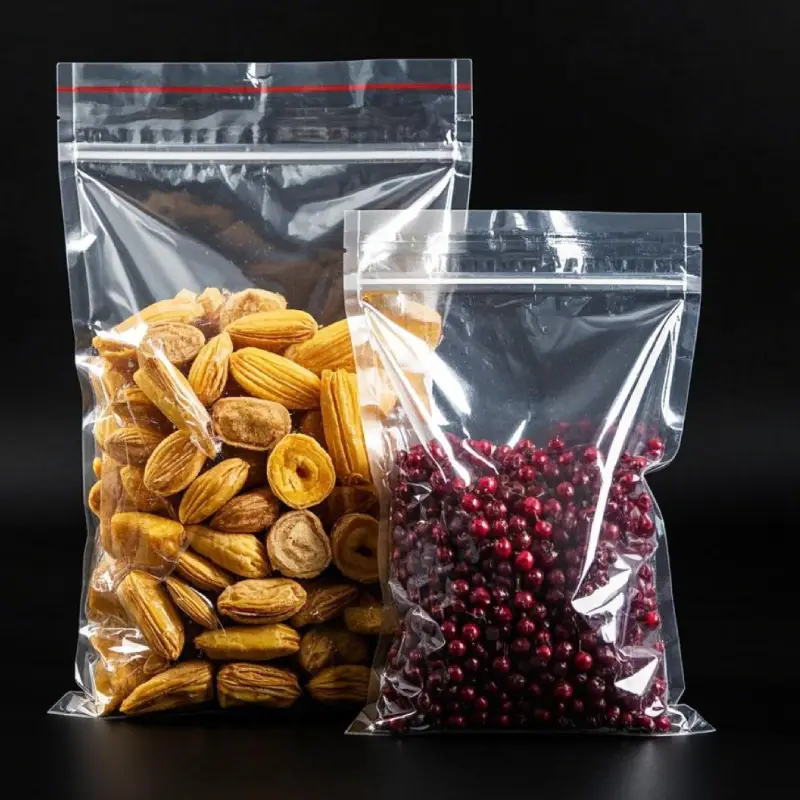Mylar bags and vacuum sealing are both popular methods for extending the shelf life of food, but they offer different benefits and are suited for different purposes. Understanding the nuances of each method is crucial for making informed storage decisions. This comparison will explore the strengths and weaknesses of Mylar bags and vacuum sealing, helping you determine the best approach for your specific needs.
We’ll delve into the different types of Mylar bags, the various vacuum sealing techniques, and the role of oxygen absorbers. By examining how each method protects against food spoilage factors like oxygen, moisture, and light, you’ll be equipped to choose the optimal preservation strategy for your pantry and long-term food storage goals.
Mylar Bag Sealing

Sealing Mylar bags is crucial for preserving the quality and extending the shelf life of their contents, especially for long-term food storage. The goal is to create an airtight barrier that prevents oxygen, moisture, and light from reaching the stored items. Several methods can be used, each with varying levels of effectiveness and equipment requirements.
Heat sealing is the most common and reliable method for Mylar bags. This involves using a heat sealer to melt the open edges of the bag together, creating a strong, airtight seal. Impulse sealers are often preferred for Mylar bags due to their ability to provide consistent heat and pressure. The sealing process requires careful adjustment of temperature and sealing time to ensure a proper seal without melting through the bag.
Beyond heat sealing, other methods exist, though they might not be as effective for long-term storage. These include using a standard clothes iron with a straight edge or even a hair straightener to apply heat and pressure to the bag’s opening. However, these methods can be less precise and may not create a consistently airtight seal. Regardless of the method chosen, it’s essential to inspect the seal thoroughly to ensure its integrity.
Vacuum Bag Sealing

Vacuum bag sealing is a popular method for extending the shelf life of food and protecting non-food items. It involves using a vacuum sealer to remove air from a specially designed bag and then sealing the bag closed. This process creates an airtight environment that helps to prevent food spoilage, freezer burn, and oxidation.
The key to successful vacuum bag sealing is using the right equipment and bags. A vacuum sealer is a machine that sucks the air out of the bag and then heat-seals it shut. Vacuum sealer bags are typically made from a durable, multi-layered plastic that is designed to withstand the vacuum sealing process and maintain an airtight seal.
Vacuum sealing offers several benefits. It can significantly extend the shelf life of food, allowing you to store it for longer periods in the refrigerator, freezer, or pantry. It also helps to prevent freezer burn, which can occur when food is exposed to cold, dry air in the freezer. Additionally, vacuum sealing can be used to protect non-food items from moisture, dust, and other environmental factors.
Mylar Bags vs Vacuum Sealing

Both Mylar bags and vacuum sealing are popular methods for preserving food, but they offer different benefits and address different needs. Understanding their strengths and weaknesses is crucial for choosing the right approach for your specific storage goals.
Mylar Bags:
Mylar bags are made from a metallized polyester film that provides an excellent barrier against oxygen, moisture, and light. This makes them ideal for long-term storage of dry goods like grains, beans, and dehydrated foods. The key to Mylar bag effectiveness is their ability to block oxygen, which is a primary cause of food spoilage. They are often used in conjunction with oxygen absorbers, small packets that further remove oxygen from the sealed bag, maximizing shelf life. Mylar bags are relatively rigid and require heat sealing for proper closure. They are not ideal for storing foods with high moisture content as they don’t prevent moisture migration as effectively as they block oxygen.
Vacuum Sealing:
Vacuum sealing focuses on removing air from a bag, which helps to prevent freezer burn and slow down oxidation. This method is effective for storing a variety of foods, including meats, cheeses, and produce, for shorter to medium-term storage. Vacuum sealing is particularly useful for preventing freezer burn on frozen foods. However, while removing air helps, standard vacuum bags are not as effective as Mylar at blocking oxygen over extended periods. They also don’t protect against light degradation. Vacuum sealing works best with flexible bags designed for the process.
Choosing the Right Method:
The best choice between Mylar bags and vacuum sealing depends on the type of food you’re storing, how long you plan to store it, and your available resources.
- For long-term storage of dry goods, Mylar bags with oxygen absorbers are the superior choice.
- For shorter-term storage of a wider range of foods, especially those going in the freezer, vacuum sealing is often more convenient.
In some cases, combining both methods – storing food in Mylar bags with oxygen absorbers and then vacuum sealing the bags – can offer the ultimate protection.
Here’s a table showing you the key differences about mylar bags vs vacuum sealing:
| Feature | Mylar Bags | Vacuum Sealing |
|---|---|---|
| Primary Benefit | Long-term oxygen, moisture, and light barrier | Prevents freezer burn, slows oxidation |
| Ideal For | Dry goods, dehydrated foods | Meats, cheeses, produce, freezer storage |
| Storage Duration | Long-term (years) | Short to medium-term (weeks to months) |
| Oxygen Protection | Excellent (especially with oxygen absorbers) | Moderate |
| Moisture Protection | Good | Moderate |
| Light Protection | Excellent | Minimal |
| Bag Type | Rigid, requires heat sealing | Flexible, designed for vacuum sealing |
| Cost | Moderate (bags and oxygen absorbers) | Moderate (bags and sealer) |
| Convenience | Less convenient for frequent access | More convenient for regular use |
| Best Use Case | Long-term pantry storage | Freezer storage, short to medium-term refrigeration |
| Can be combined? | Yes, for ultimate protection | N/A |
Mylar Bags for Food Storage vs Vacuum Sealing
Mylar bags and vacuum sealing are both popular methods for food storage, but they work in different ways and offer distinct advantages. Here’s a breakdown to help you choose the best option for your needs:
- Best for: Long-term storage of dry goods like grains, beans, and dehydrated foods.
- How it works: Mylar bags are made of a metallized polyester film that blocks oxygen, moisture, and light – the main culprits of food spoilage. They’re often used with oxygen absorbers to remove even more oxygen.
- Pros: Excellent protection against all spoilage factors, ideal for long-term storage (years).
- Cons: Requires heat sealing, not ideal for foods with high moisture content, less convenient for frequent access.
Vacuum Sealing:
- Best for: Short to medium-term storage of a wider range of foods, especially in the freezer.
- How it works: A vacuum sealer removes air from a bag, preventing freezer burn and slowing down oxidation.
- Pros: Versatile for various foods, helps prevent freezer burn, convenient for regular use.
- Cons: Not as effective as Mylar at blocking oxygen for long periods, doesn’t protect against light, air can eventually seep back in.
Which is better?
It depends on your needs!
- For long-term storage of dry goods: Mylar bags with oxygen absorbers are the winner.
- For shorter-term storage and freezer use: Vacuum sealing is more convenient.
Sometimes, the best approach is both! You can store food in Mylar bags with oxygen absorbers and then vacuum seal the bags for extra protection.
Ultimately, the best choice depends on what you’re storing, how long you need to store it, and your personal preferences.
Mylar vs Plastic Vacuum Bags
Mylar bags and plastic vacuum bags are both used for food storage, but they have key differences that make them suitable for different purposes. Here’s a breakdown:
Mylar Bags:
- Material: Made from a metallized polyester film.
- Protection: Excellent barrier against oxygen, moisture, and light.
- Best for: Long-term storage of dry goods like grains, beans, and dehydrated foods.
- Sealing: Requires heat sealing (usually with a heat sealer or iron).
- Additional needs: Often used with oxygen absorbers for maximum shelf life.
- Pros: Superior long-term protection, blocks light that can degrade food quality.
- Cons: Not ideal for foods with high moisture content, less convenient for frequent access, bags can be more expensive.
Plastic Vacuum Bags:
- Material: Made from a multi-layered plastic designed for vacuum sealing.
- Protection: Removes air to prevent freezer burn and slow oxidation.
- Best for: Short to medium-term storage of a wider range of foods, especially in the freezer.
- Sealing: Requires a vacuum sealer to remove air and seal the bag.
- Additional needs: May be used with oxygen absorbers, but not as crucial as with Mylar bags.
- Pros: Versatile for various foods, helps prevent freezer burn, convenient for regular use.
- Cons: Not as effective as Mylar at blocking oxygen for long periods, doesn’t protect against light, air can eventually seep back in.
Which is better?
It depends on your needs!
- For long-term storage of dry goods: Mylar bags with oxygen absorbers are the best choice.
- For shorter-term storage and freezer use: Plastic vacuum bags are more convenient.
Sometimes, the best approach is both! You can store food in Mylar bags with oxygen absorbers and then vacuum seal the bags for extra protection.
Conclusion
Mylar bags and vacuum sealing serve different purposes in food storage. Mylar bags, especially with oxygen absorbers, offer superior long-term protection against light, oxygen, and moisture, ideal for dry goods. Vacuum sealing, while helpful in removing air, doesn’t provide the same level of long-term protection against all spoilage factors. Often, the best approach is combining both: storing food in Mylar bags with oxygen absorbers and then vacuum sealing the bags for added protection.
Choosing the right method depends on your storage goals. For short-term storage or items frequently accessed, vacuum sealing might suffice. For long-term preservation of staples, Mylar bags with oxygen absorbers are essential. Understanding their distinct benefits allows for informed decisions about maximizing food shelf life.
Need wholesale Mylar bags for your storage needs? Contact BN Pack today for competitive pricing and a wide selection of sizes. Get a quote now and ensure your food stays fresh!
